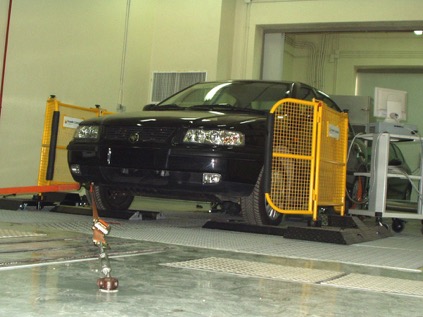Internal combustion engine Calibration
With the aim of developing and designing optimal engines in terms of pollution, fuel consumption and power, IPCO uses the most up-to-date methods for calibrating engines. Most of experts’ responsibilities in this field are in two sections is as follow:
- Calibration activities on the vehicle
- Calibration activities on the engine
Calibration activities on the vehicle
This company is able to perform complete calibration activities on a wide range of vehicles, with different engines, different engine control units (ECU) or different gearboxes. These tests are performed with advanced and up-to-date equipment and, for example, include the following tasks:
- Winter and summer test trips in different climate conditions
- Consulting services and verification of calibration done by other companies for all car manufacturers
- Strengths and weaknesses analysis of different ECU calibration in benchmarking activities.
- Tuning services for race cars
- Consulting and other special technical services required by customer
- Confirmation tests and review of achievement of project results
- Achieving EU5 & 6 Emission and Fuel consumption standards
- Optimization of vehicle functions such as acceleration, driving comfort, start quality, drivability and …
- EOBD Calibration
- Services for inspection, identification and elimination of calibration defects on production vehicles (Fails to achieve emission or fuel consumption targets, engine failure due to incorrect knock calibration).
- ECU tuning for specific applications: durability tests, end-of-line engine production tests and …
- Calibration for rapid prototyping: to launch prototype vehicles, concept vehicles, retrofit vehicles and optimized engines
- Optimization of fuel consumption, power and torque and other required parameters

Calibration activities on the engine
Execution of the engine calibration is performed in the engine test cell equipped with the most advanced equipment. Some of these tests are as follow:
- ECU tables calibration to optimize fuel consumption, power and torque
- Load detection calibration
- Base mapping calibration
- Torque structure calibration
- Knock calibration
Torque structure calibration
- Maximum torque
- Torque correction based on spark ignition advance
- Torque correction based on air fuel ratio
- Coordination torque by air flow
- Coordination torque by spark ignition
- Dynamic management of torque share between air flow and spark ignition
- Max and min torque
- Friction torque
- Demanded torque: pedal map, accessories torque (AC, Fan, Hydraulic Steering)
Base Mapping calibration
- Base ignition angle calibration
- Nominal lambda for component protection
- Nominal lambda for full load
- Ignition angle correction based on air-fuel ratio
- Injection phase
- VVT angle (cam shaft angle)
- Ignition angle calibration considering knock thresholds: standard fuel, low octane fuel
- Min ignition angle
- Min relative load
Load Detection calibration
- Intake manifold pressure and temperature calculation
- Exhaust manifold pressure and temperature calculation
- Residual gas mass calculation
- Air pressure pulsation
- Intake and exhaust valves timing
- Ambient pressure and temperature calculation
Knock calibration
- Ignition angle calibration based on fuel quality
- Knock sensor position determination
- Knock detection - knock sensor signal filtering frequency
- Knock detection - knock determination window
- Knock detection – knock thresholds
- Knock adaptation
- Dynamic knock detection




